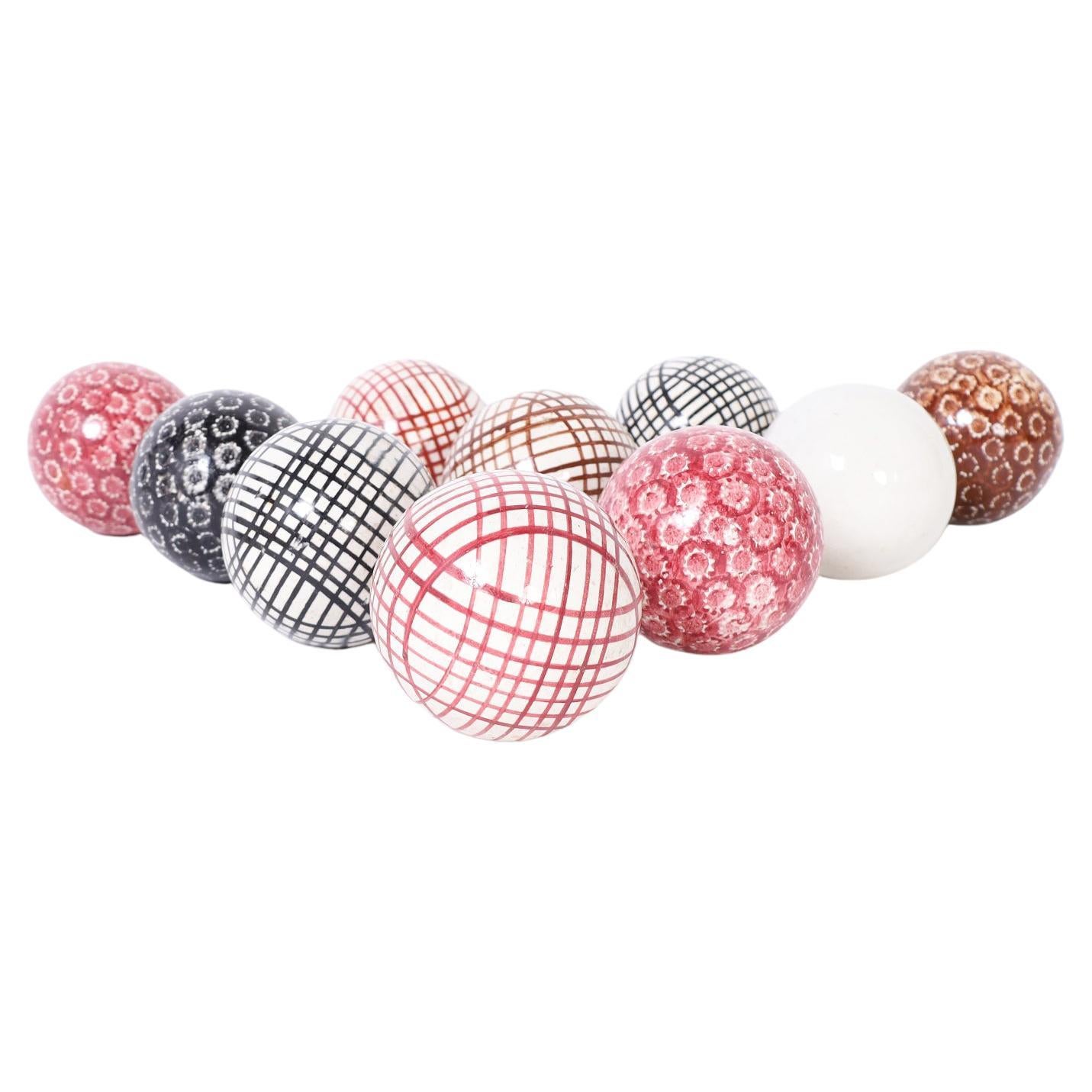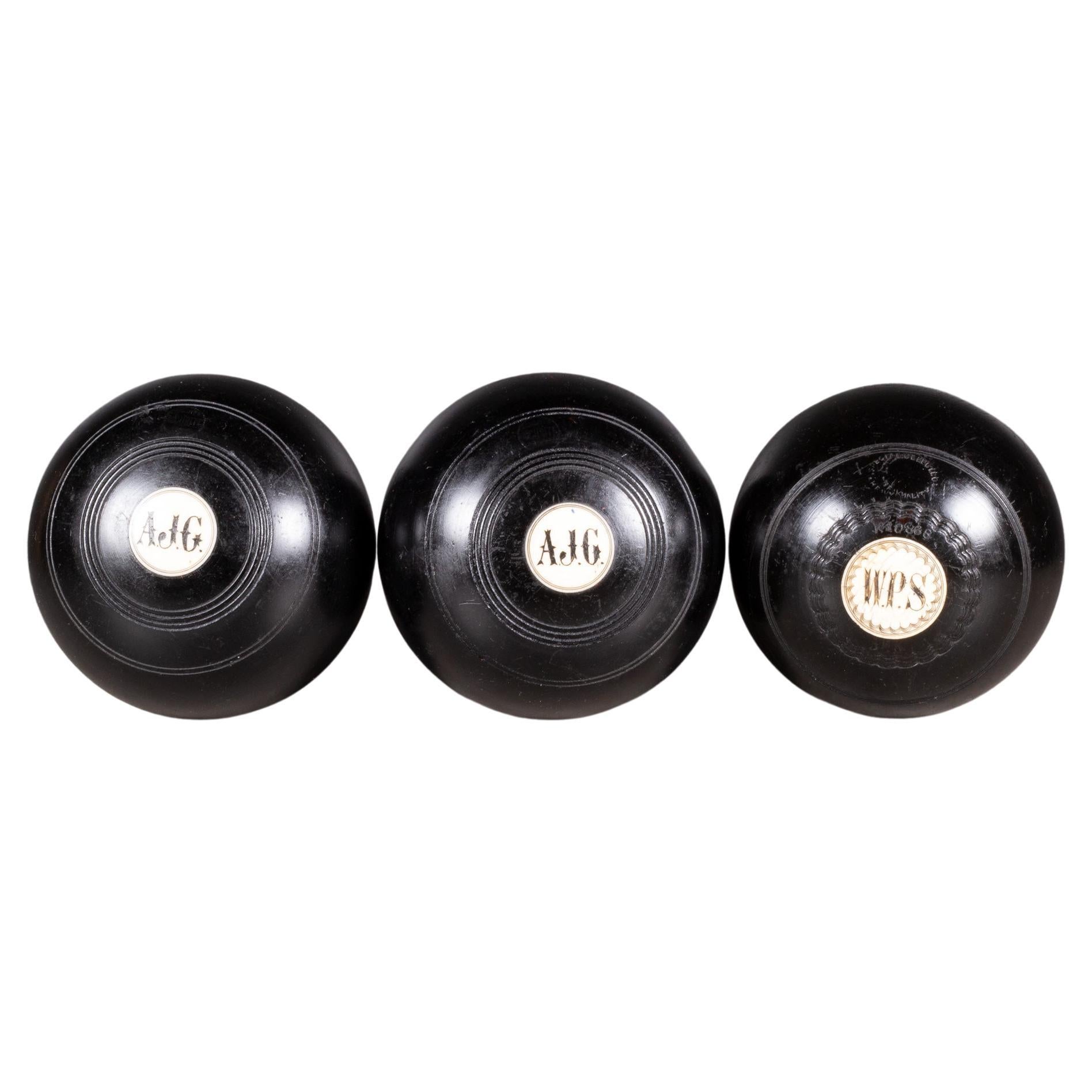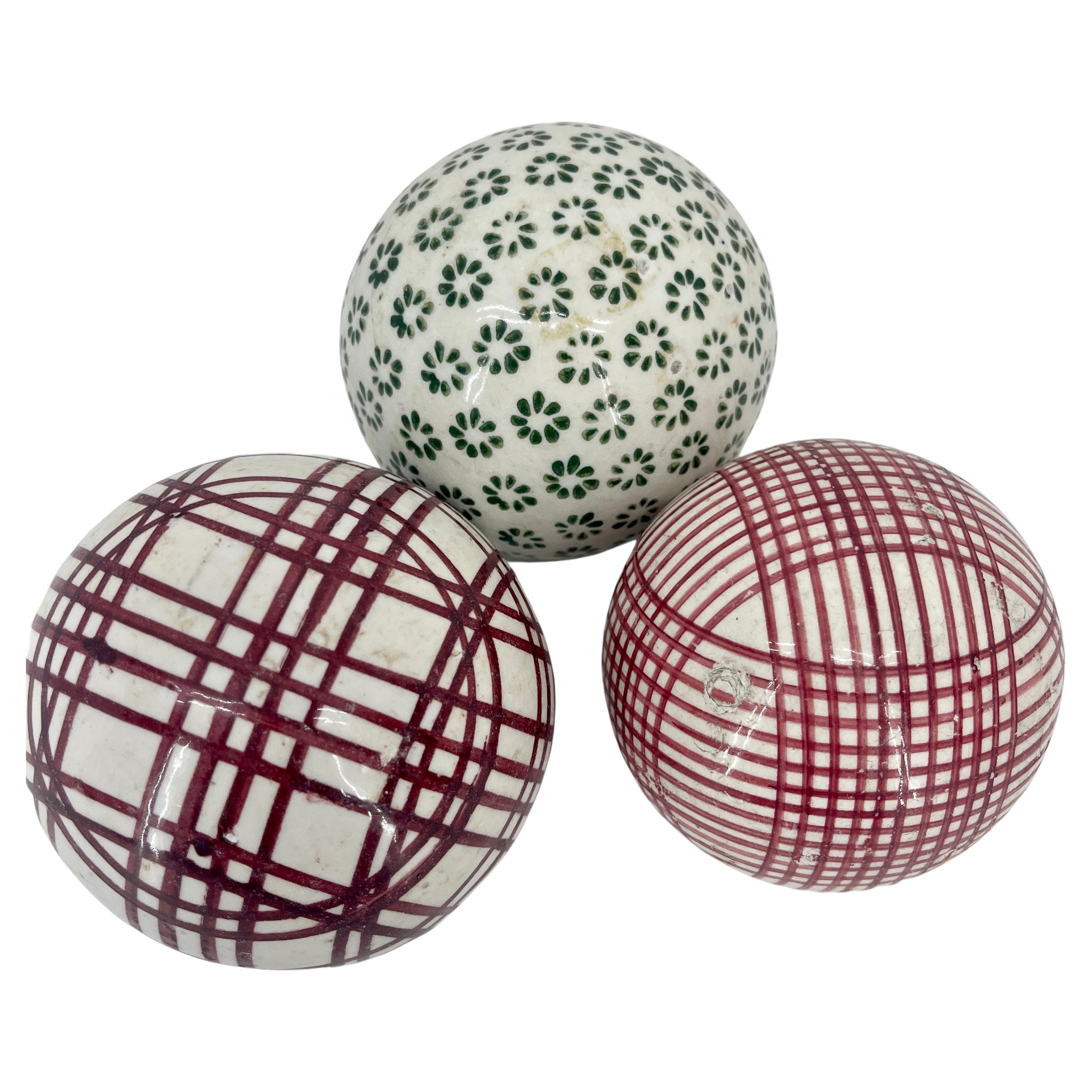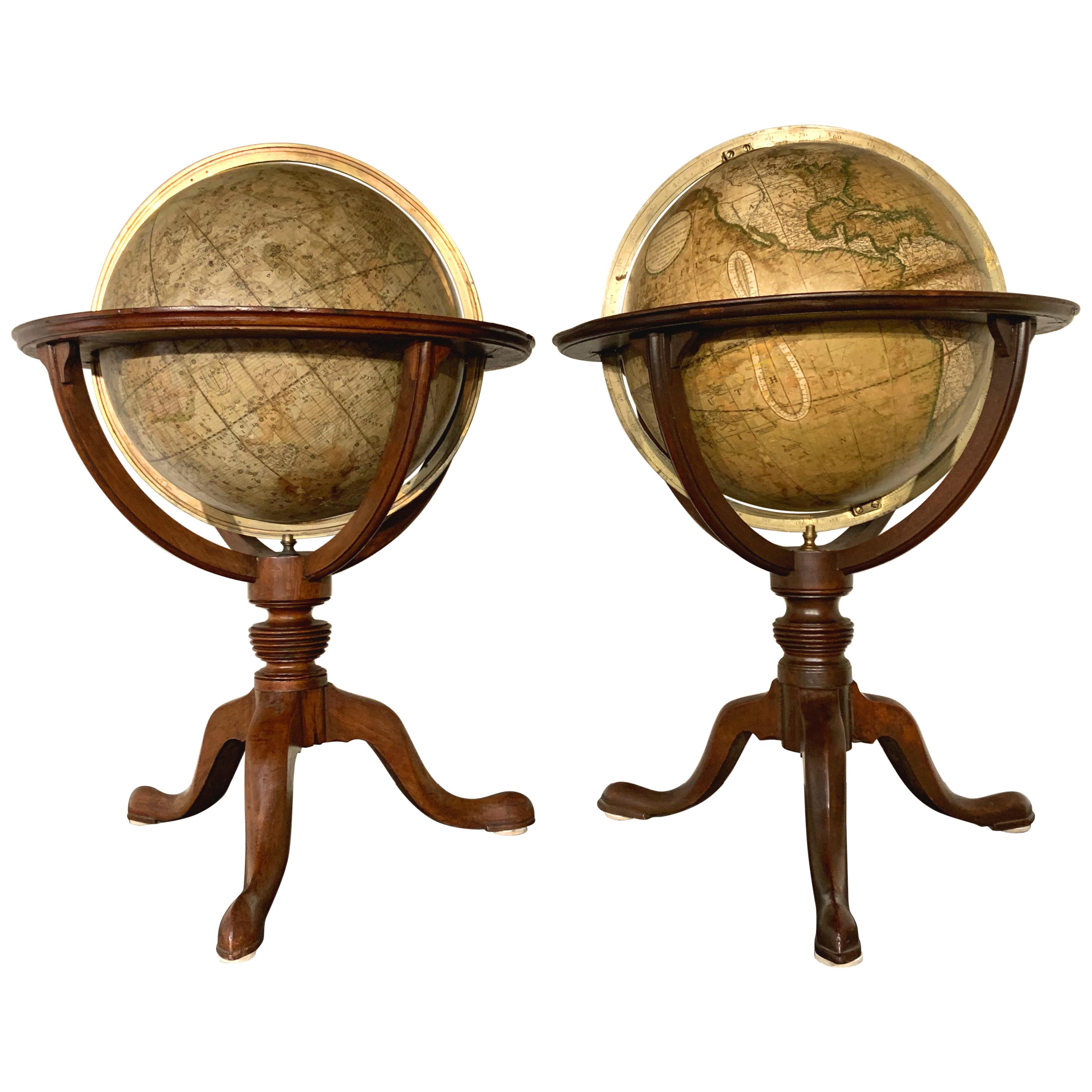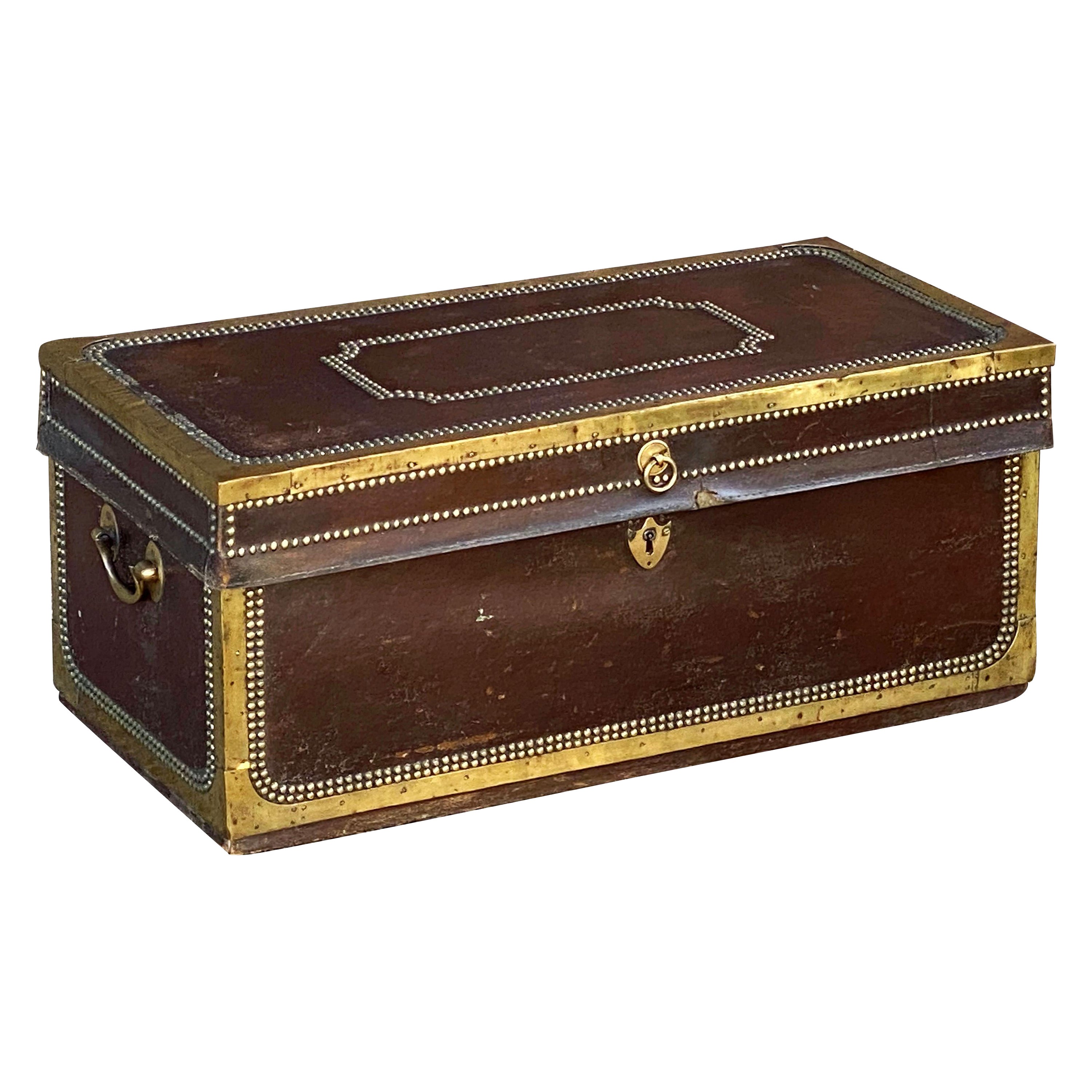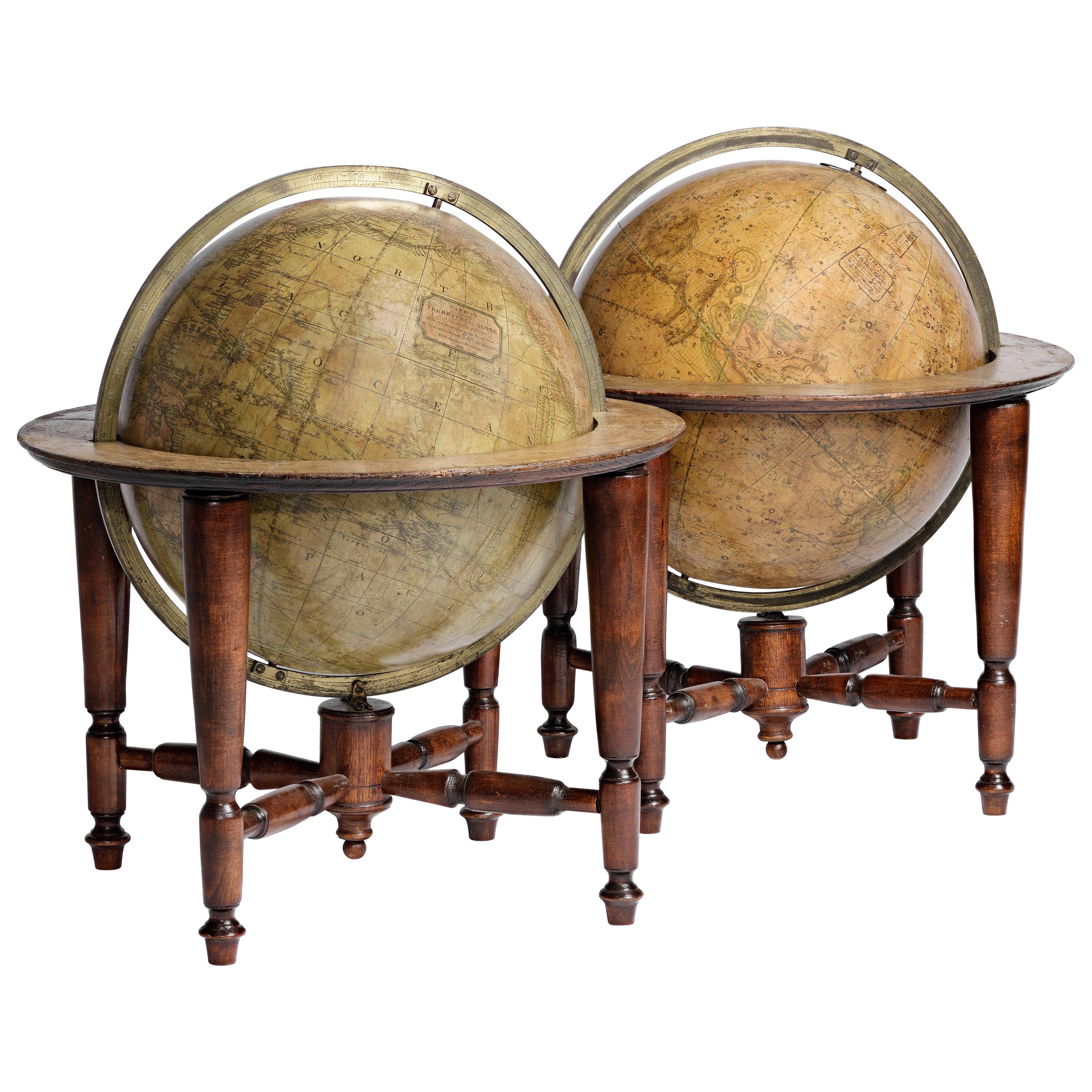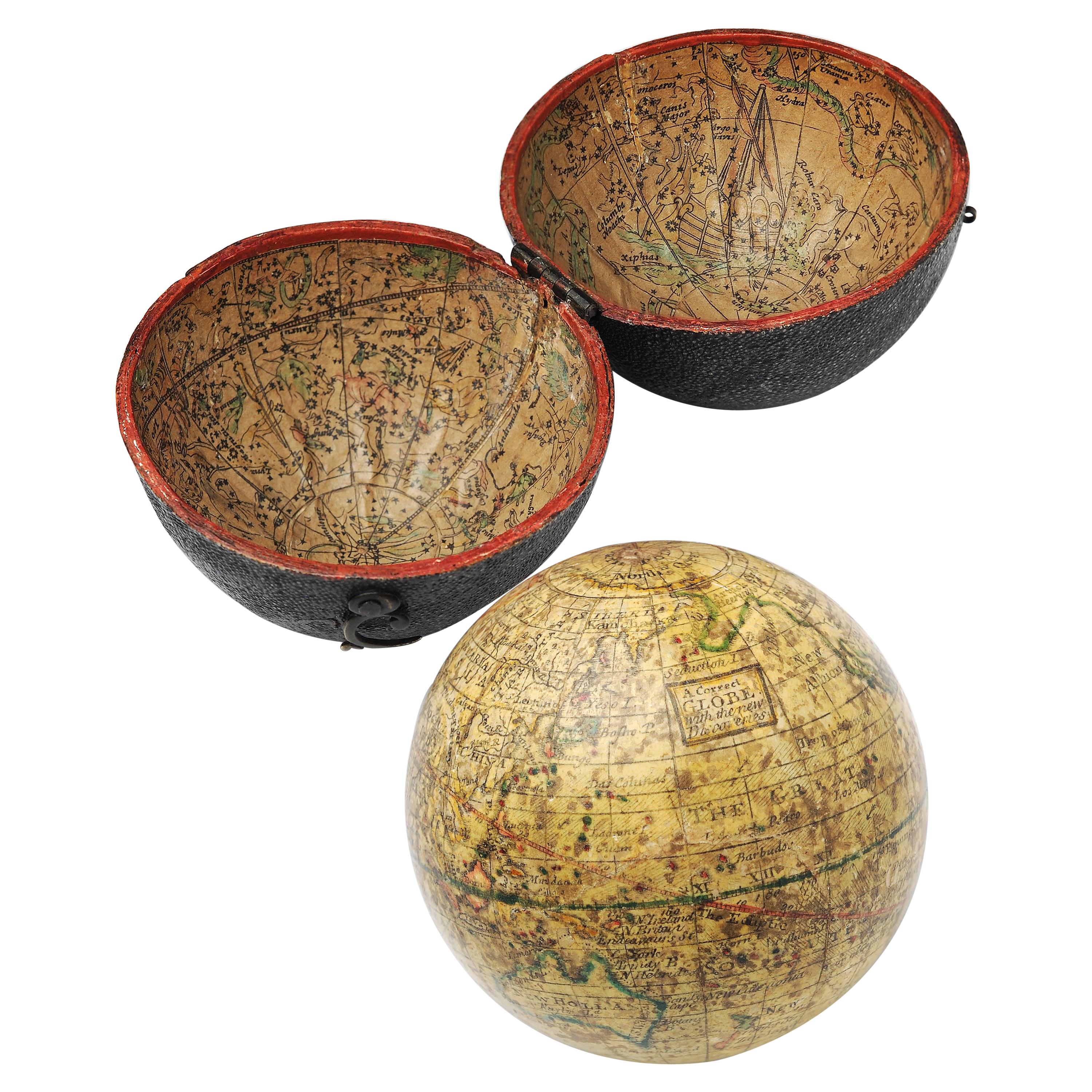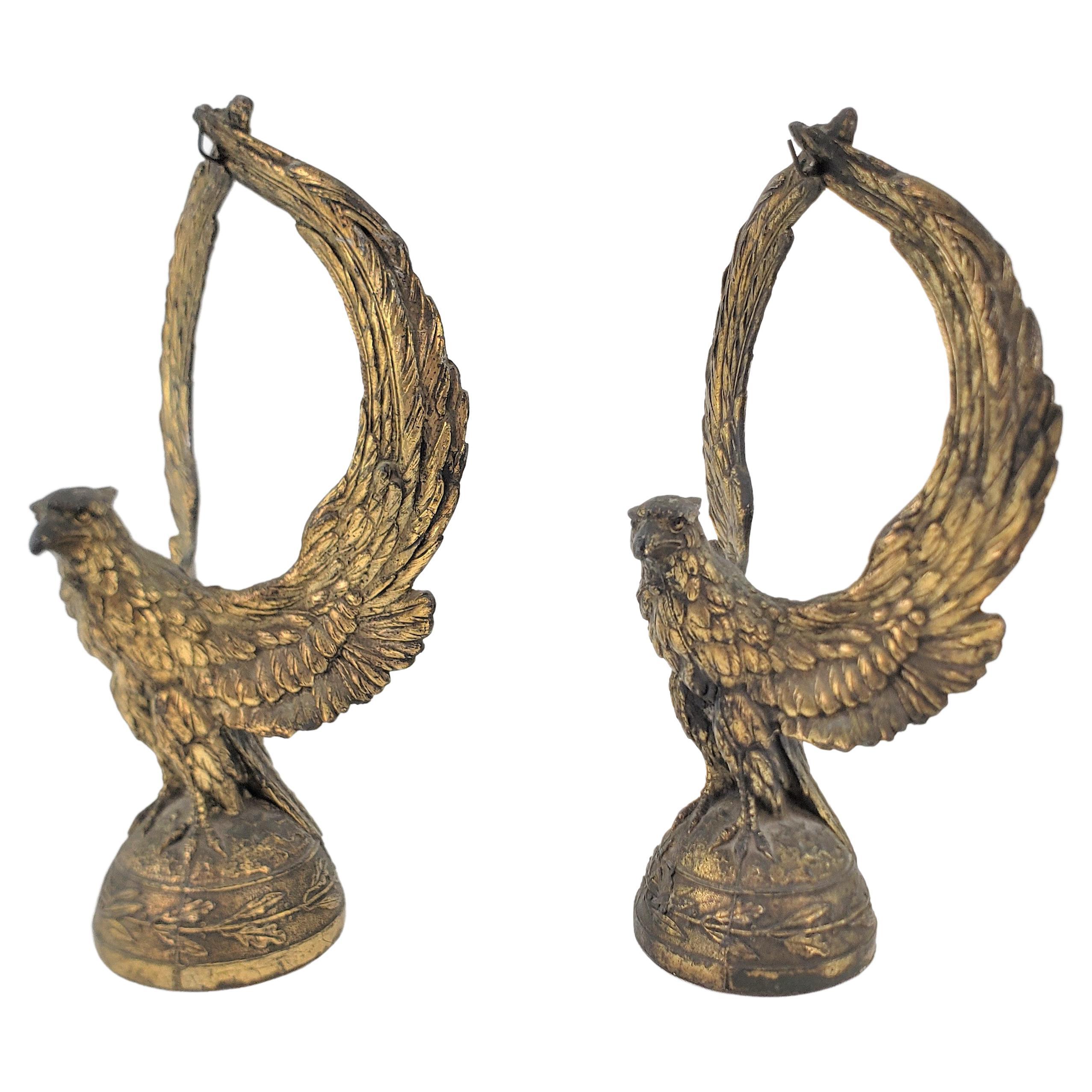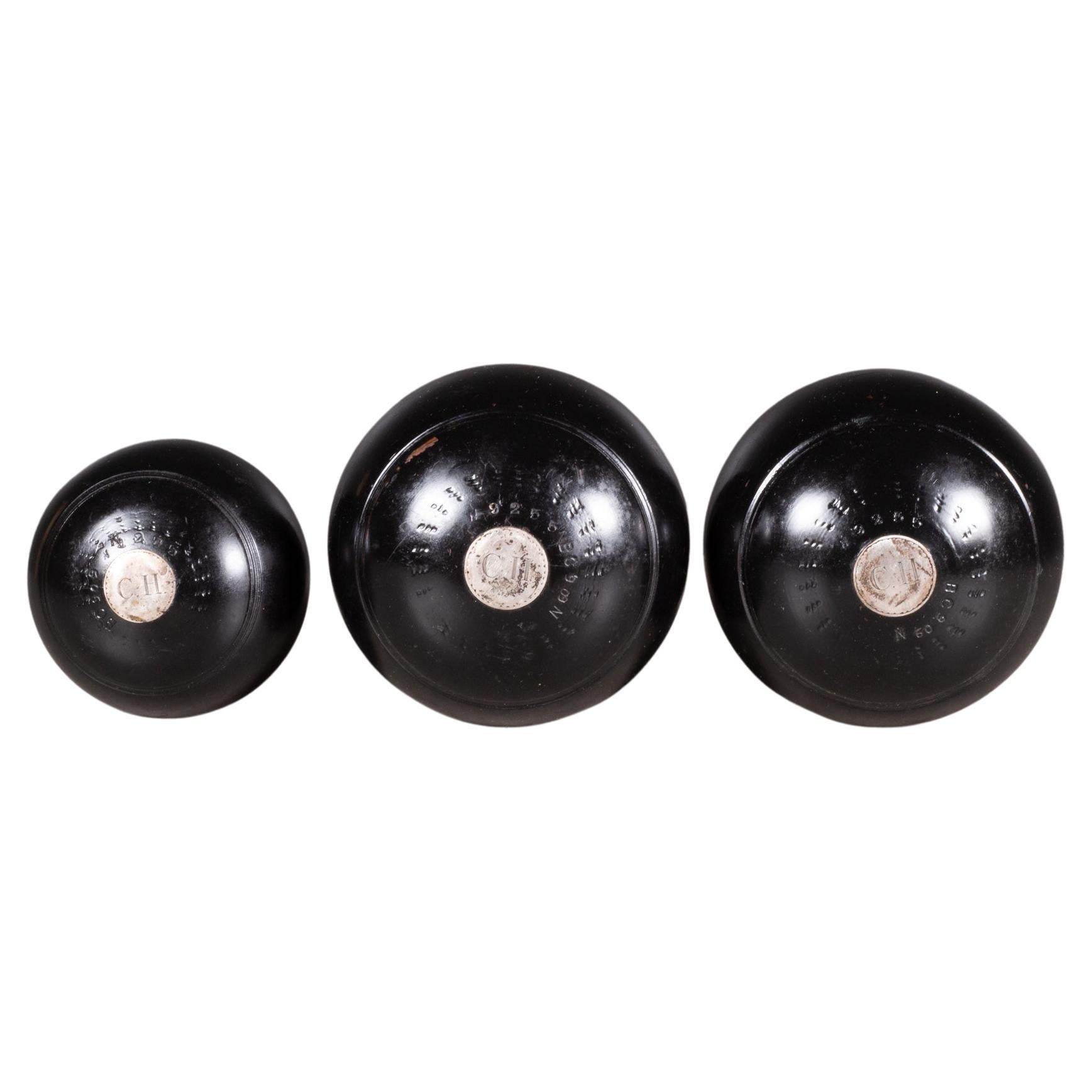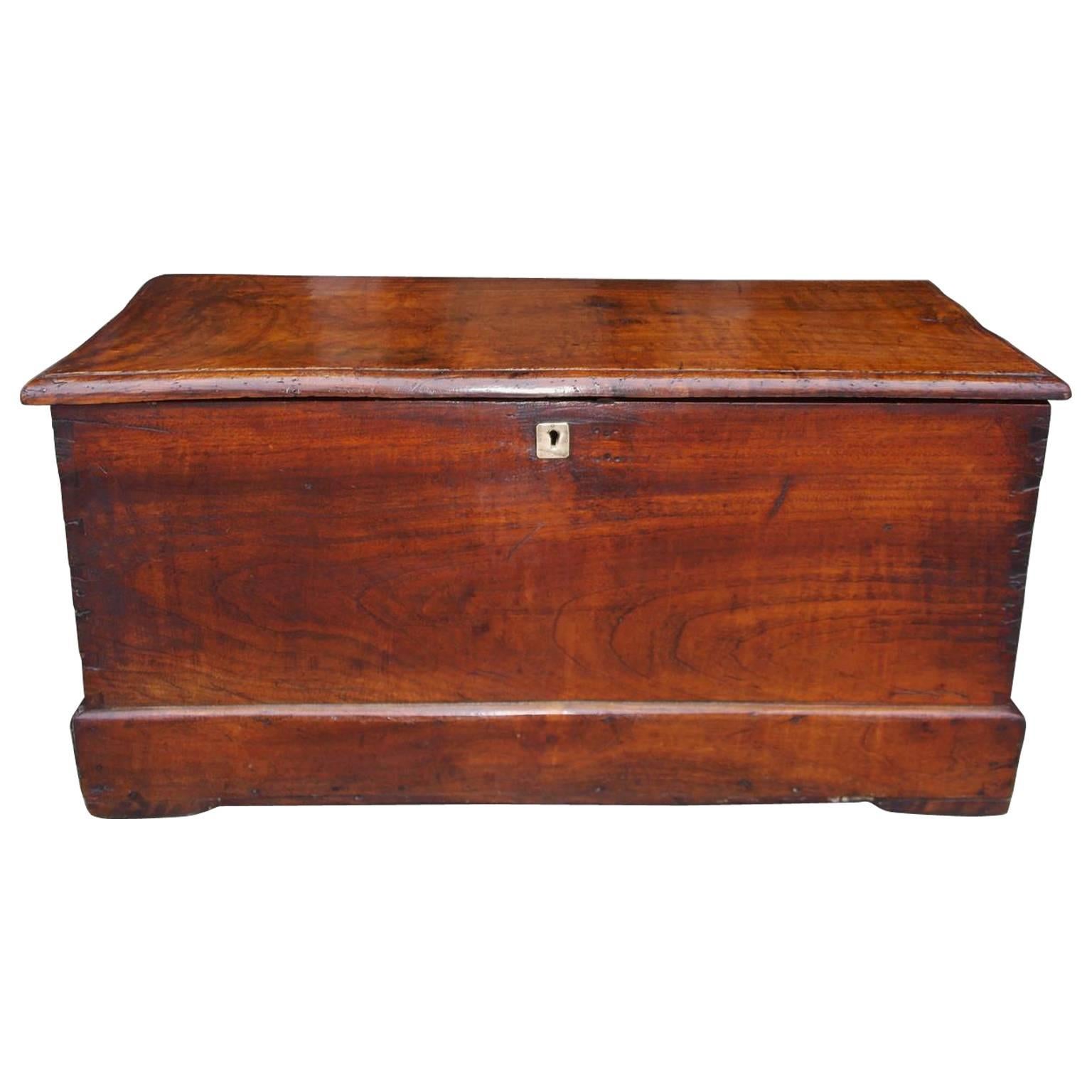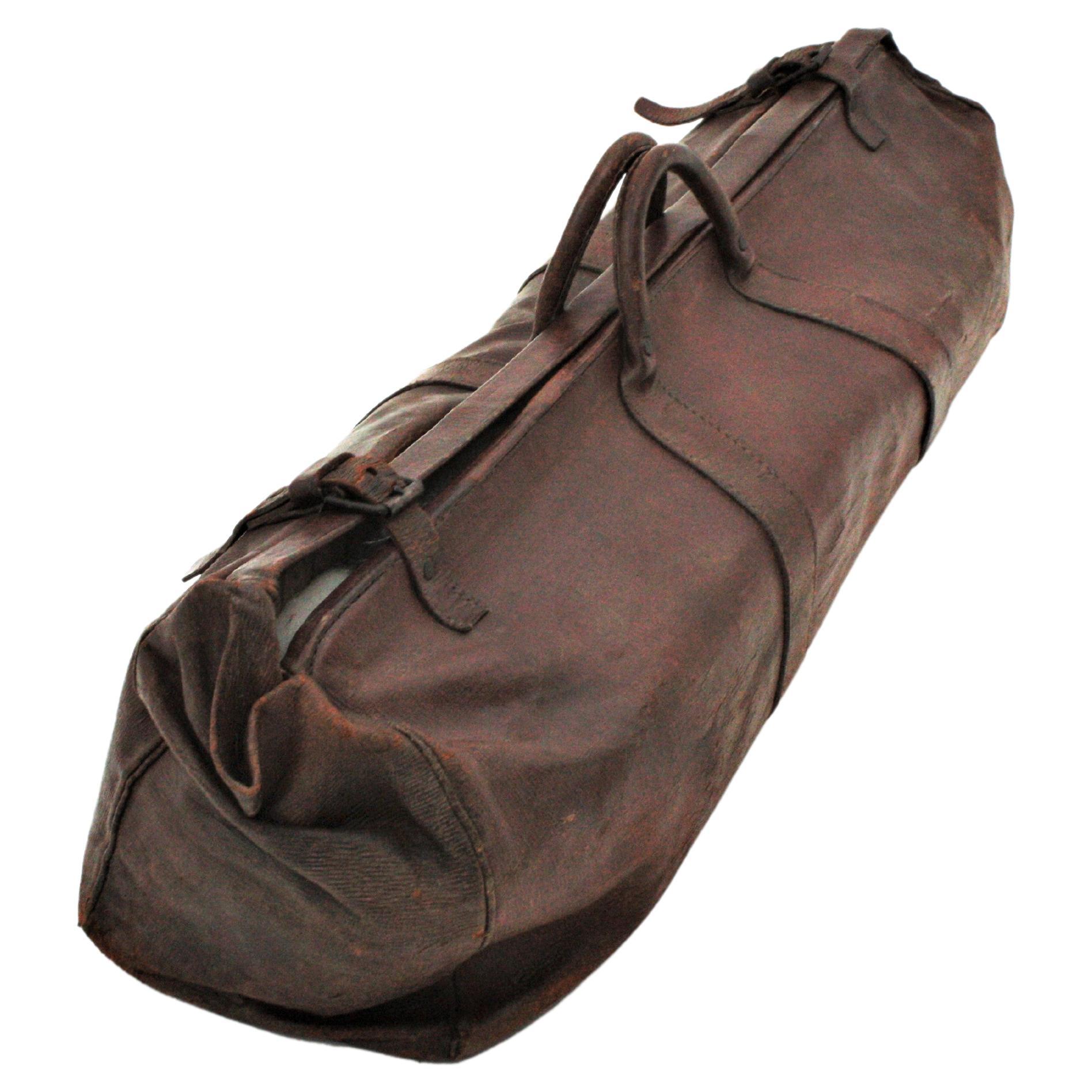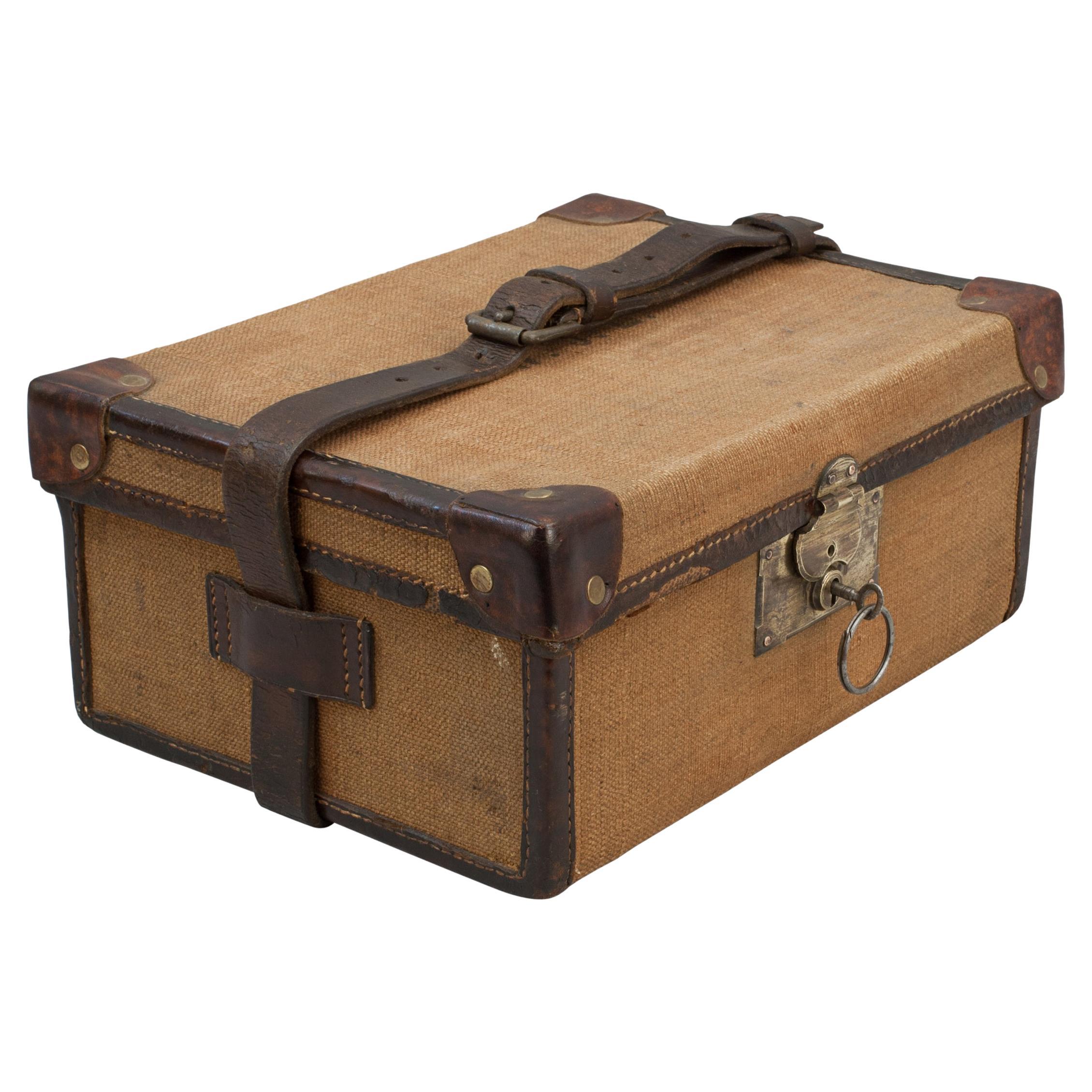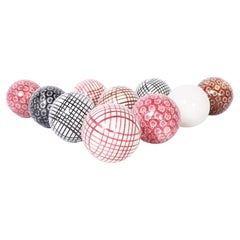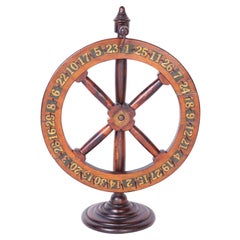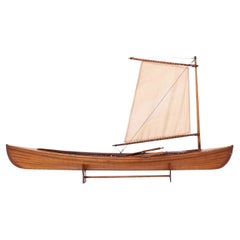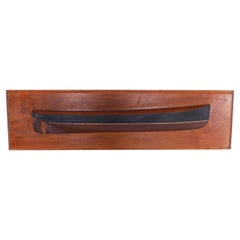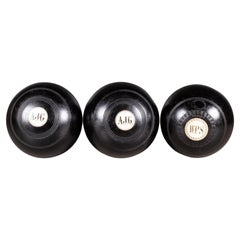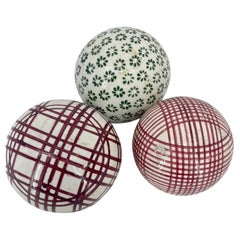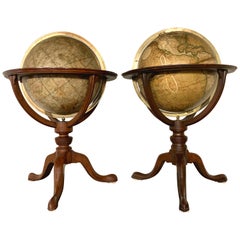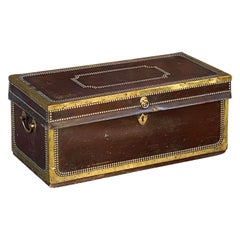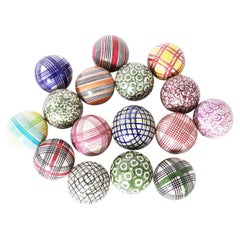
Group of Sixteen Antique English Stoneware Carpet Balls
View Similar Items
Want more images or videos?
Request additional images or videos from the seller
1 of 9
Group of Sixteen Antique English Stoneware Carpet Balls
About the Item
- Dimensions:Height: 2.5 in (6.35 cm)Diameter: 2.5 in (6.35 cm)
- Style:Victorian (Of the Period)
- Materials and Techniques:Stoneware,Glazed
- Place of Origin:
- Period:
- Date of Manufacture:1880
- Condition:Wear consistent with age and use.
- Seller Location:Palm Beach, FL
- Reference Number:Seller: 60741stDibs: LU860328209472
About the Seller
4.9
Vetted Professional Seller
Every seller passes strict standards for authenticity and reliability
Established in 1992
1stDibs seller since 2009
1,094 sales on 1stDibs
Typical response time: 1 hour
Authenticity Guarantee
In the unlikely event there’s an issue with an item’s authenticity, contact us within 1 year for a full refund. DetailsMoney-Back Guarantee
If your item is not as described, is damaged in transit, or does not arrive, contact us within 7 days for a full refund. Details24-Hour Cancellation
You have a 24-hour grace period in which to reconsider your purchase, with no questions asked.Vetted Professional Sellers
Our world-class sellers must adhere to strict standards for service and quality, maintaining the integrity of our listings.Price-Match Guarantee
If you find that a seller listed the same item for a lower price elsewhere, we’ll match it.Trusted Global Delivery
Our best-in-class carrier network provides specialized shipping options worldwide, including custom delivery.More From This Seller
View AllCollection of Ten Antique Carpet Balls
Located in Palm Beach, FL
Ten carpet balls crafted in stoneware, decorated and glazed in several different colors and designs including a white cue ball.
Category
Antique Late 19th Century English Victorian Antiquities
Materials
Stoneware
$1,800 / set
Antique English Gaming Wheel
Located in Palm Beach, FL
Transporting antique English gaming wheel crafted in pine darkened by aged shellac with leather stopper and decoupaged numbers 1 through 30 and se...
Category
Antique 19th Century English British Colonial Games
Materials
Pine
Antique English Wooden Skiff Model
Located in Palm Beach, FL
Lofty antique English Edwardian Thames river rowing skiff model with sale, hand crafted in mahogany with ambitious accuracy. Presented on a hand crafted wood...
Category
Early 20th Century English Edwardian Models and Miniatures
Materials
Wood, Mahogany
Antique English Half Hull Model
Located in Palm Beach, FL
Transporting antique English half hull model handcrafted in mahogany with the original paint presented on a mahogany plaque.
Category
Early 20th Century English Edwardian Models and Miniatures
Materials
Mahogany, Paint
Pair of Antique Italian Mirrored Obelisks
Located in Palm Beach, FL
Standout pair of 19th Century neoclassical Italian obelisks clad in mirrored sections with etched floral designs now oxidized to perfection with the expected imperfections. Presented...
Category
Antique Late 19th Century Italian Neoclassical Obelisks
Materials
Mirror
$6,350 / set
English Edwardian Set of Eight Decorative Game Pieces
Located in Palm Beach, FL
Intriguing group of eight English game pieces crafted in wood in bowling pin form, clad in paper with decorative printed letters now aged to perfection.
Category
Early 20th Century English Edwardian Games
Materials
Wood, Paper
You May Also Like
Antique Monogrammed Bone Inlaid English Lawn Balls c.1900
Located in San Francisco, CA
ABOUT
A set of English lawn bowls made of Lignum Vitae Wood inlaid with bone. Monogrammed "AJG" and "WPS" and "1" and "2" the other side.
CREATOR Unknown. Made in Scotland.
...
Category
Early 20th Century Scottish Victorian Sports Equipment and Memorabilia
Materials
Bone, Wood
$556 Sale Price / set
20% Off
Collection of Three Antique Scottish Carpet Rug Balls, Late 19th Century
Located in Haddonfield, NJ
Set of three scottish stoneware carpet rug balls.
Carpet balls in reds and green. A storied game dating back Centuries, Carpet Ball is similar to Bocci...
Category
Antique Late 19th Century Scottish Victorian Games
Materials
Stoneware
Pair of 19th Century English J & W Cary Celestial/Terrestrial Table Model Globes
By John & William Cary
Located in Milford, NH
A fine assembled pair of 12-inch English table model globes on stands manufactured by J & W. Cary, the left globe with cartouche labeled “The New Celestial Globe, on which are correc...
Category
Antique Early 19th Century English Globes
Materials
Brass
English Campaign Trunk of Brass-Bound Leather and Camphor Wood, circa 1820
Located in Austin, TX
A handsome medium-sized British officer's military Campaign camphor trunk or chest of brass-bound and studded leather over camphor wood, circa 1820.
Manufactured by the British East India...
Category
Antique Early 19th Century English Campaign Trunks and Luggage
Materials
Brass, Metal
Pair of English 12-inch Globes by William Harris, London, 1832 and 1835
By William Harris
Located in Milano, IT
Pair of 12-inch table globes
William Harris
London, 1832 and 1835
Slight abrasions from use; few cracks
lb 11 each (kg 5)
The two terrestrial and celestial globes rest in their original Dutch style stands with four supporting turned wood columns.
Each one measures 12 in in height x 16.5 in in diameter with the diameter of the spheres measuring approximately 12 in; 48 cm in height x 42 cm in diameter x 31 cm diameter of the spheres.
The 12 inch measure was the most frequently used by British manufacturers of globes of this period.
Each globe is composed of two series of twelve printed paper gores, aligned and glued onto plaster spheres.
The brass circle of the meridian bears engravings...
Category
Antique 1830s English William IV Globes
Materials
Paper, Wood
English Pocket Globe, London, Circa 1775-1798
By Herman Moll
Located in Milano, IT
Pocket globe
London, between 1775 and 1798
Re-edition of the globe of Hermann Moll (1678-1732) dated 1719
The globe is contained in its original case, which itself is covered in shark skin.
There are slight gaps in the original paint on the sphere. The case no longer closes.
The sphere measures 2.7 in (7 cm) in diameter whereas the case measures 2.9 in (7.4 cm) in diameter.
lb 0.22 (kg 0.1)
The globe is made up of twelve printed paper gores aligned and glued to the sphere.
In the North Pacific Ocean there is a cartouche with the inscription:
A Correct
Globe
with the new
Discoveries.
The celestial globe is depicted on the inside of the box and is divided into two hemispheres with the cartouche:
A correct globe
with ye new cons
relations of Dr.
Halley & c.
It shows the ecliptic divided into the days of the zodiacal calendar and the constellations represented as animals and mythological figures.
On the globe are delineated the equinoctial line, divided by degrees and hours, the ecliptic and the meridian (passing west of Greenwich). The continents are shaded and outlined in pink, green and yellow. It shows: the Cook routes; a wind rose in the Southern Indian Ocean; Antarctica without land; Africa with Negroland (Hermann Moll is considered the first geographer to name the West African region in his 1727 map. (Encyclopaedia Britannica, ed. 1902, under "States of Central Africa"); Tartary in Central Asia; the Mogul kingdom in northern India; in North America only New England, Virginia, Carolina, Florida, Mississippi are identified; California is already a peninsula; the northwest coast of America is "unknown parts" (Alaska is not described and it is only partially delineated, it was to become part of the United States in 1867); Mexico is named "Spain"; Central South America "Amazone America". Australia (which was to be so named after 1829) is called New Holland. The route of Admiral Anson is traced (1740) and the trade winds are indicated by arrows. (See Van der Krogt, P., Old Globes in the Netherlands, Utrecht 1984, p. 146 and Van der Krogt, P. - Dekker, E., Globes from the Western World, London 1993, pp. 115.)
Elly Dekker, comparing Moll’s 1719 globe and his re-edition (of which the one described above is a sample), identifies the differences between them: the two editions are quite similar to each other, but in the "anonymous" globe, compared to the previous globe of 1719, California looks like a proper peninsula - the reports of the Spanish explorers of the region had given rise to uncertainty over whether it was connected to the mainland or not. The geographical nature of California was confirmed after the explorations of Juan Bautista de Anza (1774-1776). The routes of Dampier's journey were partially erased and the route of Captain James Cook's first voyage was superimposed on them, and the geography of Australasia was adapted accordingly, including the denomination of the Cook Strait. See Dekker, Elly, Globes at Greenwich, 1999.
An important ante quem element is represented by Tasmania: it is not separated from Australia by the Bass Strait...
Category
Antique Late 18th Century English George III Globes
Materials
Shagreen, Paper
